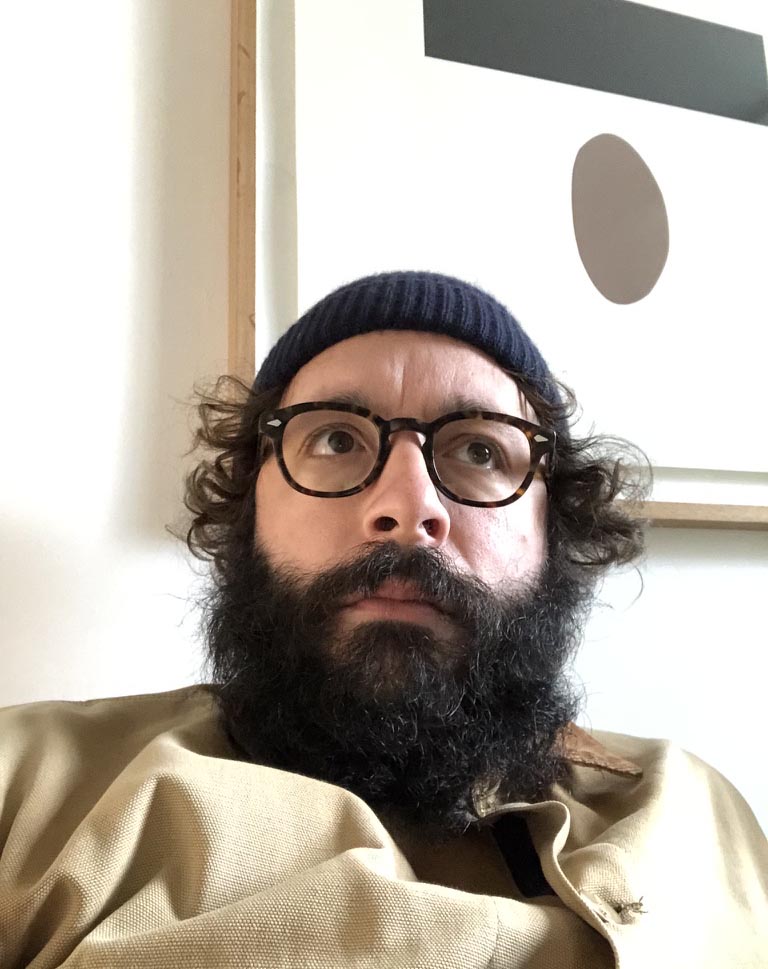“John called us and said he thought that we were the best stuff that he had heard since the Beatles… To hear that from John Lennon was like, ‘What?’ It was a wonderful compliment”: Davey Johnstone on Elton John’s smash-hit Beatles collab with John Lennon
How a visit from John Lennon during the sessions for Elton John’s 1975 masterpiece Captain Fantastic And The Brown Dirt Cowboy yielded an impromptu Beatles cover and another number one hit

How strange it must have been to view ‘70s pop culture through the eyes of a Beatle.
Having done so much to steer rock ’n’ roll’s evolution through the cultural riptides of the ‘60s, it surely would have been bewildering to then gaze upon this new era of creative effervescence at a time when lawsuits and persistent appeals for the Beatles to reform were anchoring them in the past.
Nothing the Fab Four had done before would suggest that they were artists overly enthralled by nostalgia. The reunion talk and the multimillion dollar offers from the super-rich as itself a form of zombie Beatlemania. Those appeals would come to nothing. John, Paul, George and Ringo were going it alone, and music, as is its wont, carried on regardless.
The Rolling Stones rolled on. The big beasts of rock were assembled. Led Zeppelin, Deep Purple, Black Sabbath had arrived. David Bowie had made himself known. And then there was Elton John, who with his 1970 hit, Your Song, had officially introduced himself as a generational talent.
John Lennon was listening. Speaking to Rolling Stone in 1975, Lennon described his fellow Beatles and the boys in the Stones as the “Old Guard.” Bowie and John were the “newies” – and Your Song was just what British rock was waiting for.
“[I] remember thinking, ‘Great, that’s the first new thing that’s happened since we happened.’ It was a step forward,” said Lennon. “There was something about his vocals that was an improvement on all of the English vocals until then.’”
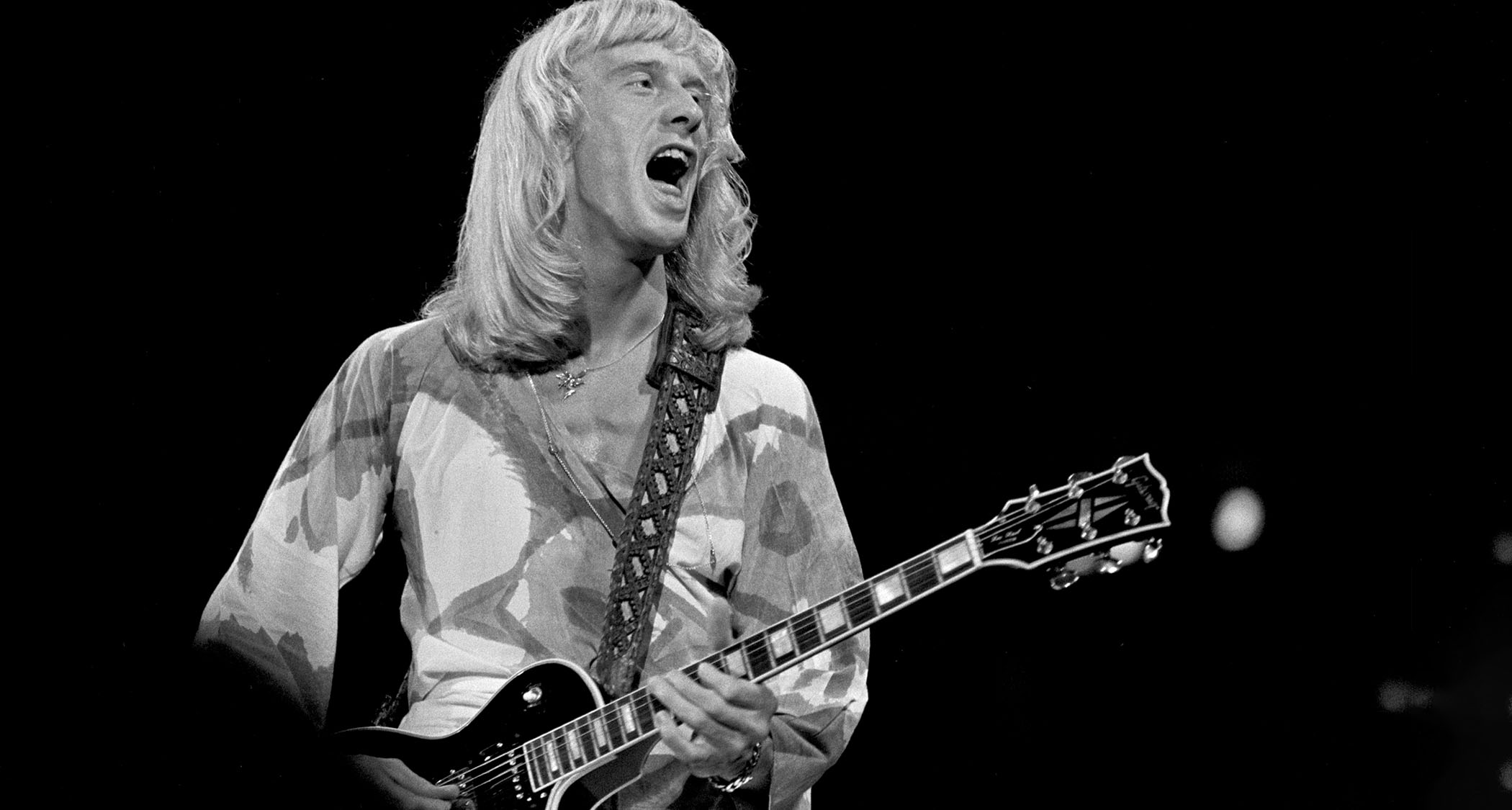
Elton was just getting started. He and his songwriting partner, Bernie Taupin, were developing a real taste for it. Elton worked fast, chasing his eponymous 1970 album with Tumbleweed Connection, recording a third studio album that year with the Friends soundtrack (1971). All three went gold.
Want all the hottest music and gear news, reviews, deals, features and more, direct to your inbox? Sign up here.
Technically, he recorded four albums in 1970, with his first live album, 17-11-70, taped during his much-bootlegged WABC-FM radio performance.
Elton was of no mind to slow down. In 1971, by the time he entered London’s Trident Studios to track Madman Across The Water, he had hit his straps, backed by a formidable rhythm section of Dee Murray on bass guitar and Nigel Olsson on drums.
Elton and I became very close musically when I worked on Mad Man Across The Water as a session guy... There was a thing that happened between us. It was like, ‘This is working really good. This guy is easy to work with’
Davey Johnstone
Caleb Quaye returned to play electric guitar, tracking acoustic guitars on Holiday Inn, but it was the arrival of a coltish Scottish folk guitarist who could play anything with a string on it, Davey Johnstone, that would change the direction of the Elton John Band, inaugurating a collaboration that continues to this day, with Johnstone not only Elton’s guitar player but musical director, too.
He had been recommended to Elton by producer Gus Dudgeon, who had worked with Johnstone with Magna Carta, and after the success of Mad Man… he officially joined the band for 1972’s Honky Château.
“Elton and I became very close musically when I worked on Mad Man Across The Water as a session guy, because I was playing all acoustic on the title track of that album, and then mandolin and sitar on Holiday Inn,” says Johnstone, joining MusicRadar over Zoom. “And something happened. There was a thing that happened between us. It was like, ‘This is working really good. This guy is easy to work with.’ And that’s what it was for both of us, so that continued and just became what it was.”
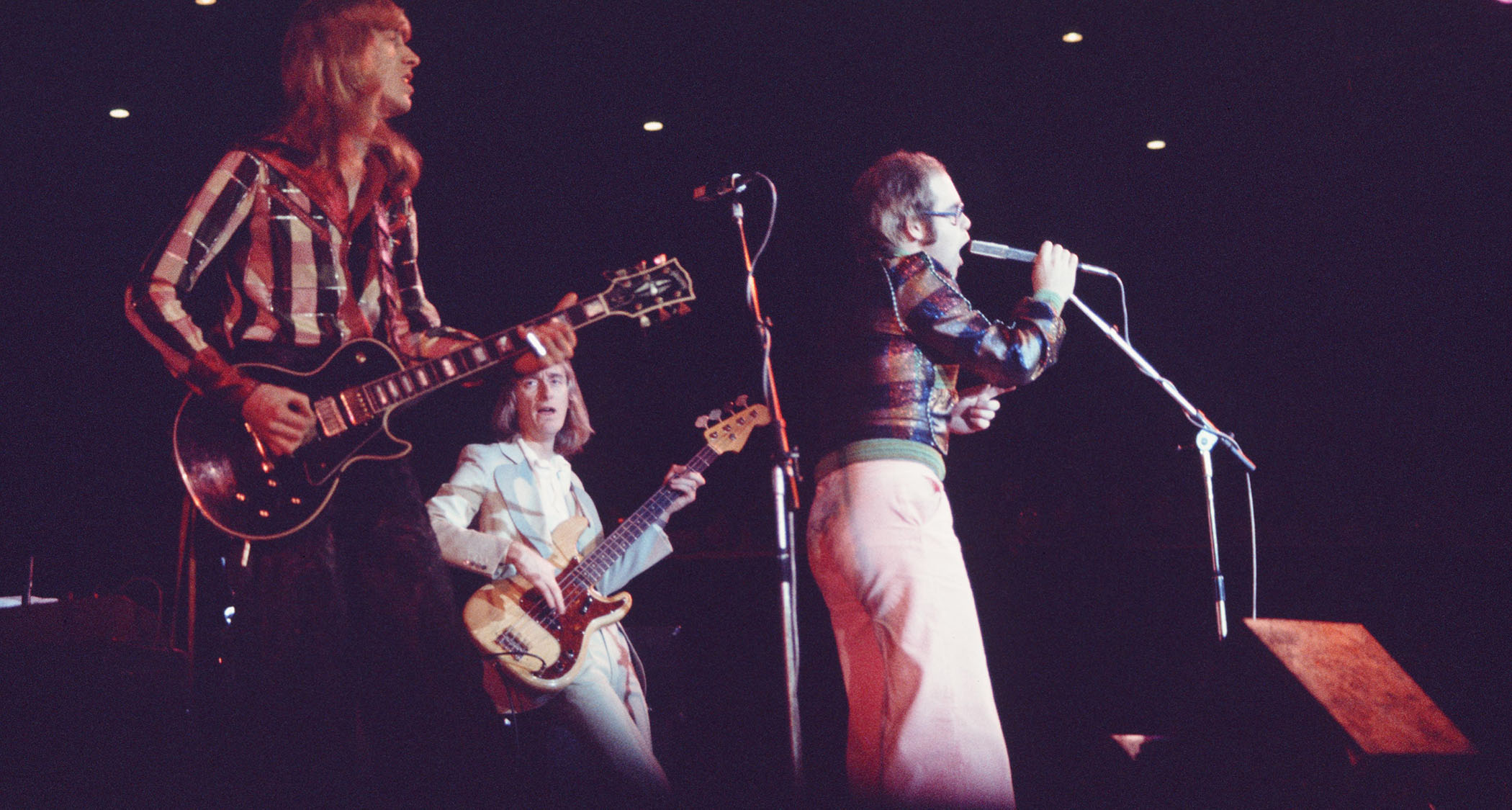
Elton likes to introduce Johnstone as the guitarist who had never picked up an electric guitar before Honky Château and yet somehow turned his band into a rock ’n’ roll outfit. That’s an exaggeration, but Johnstone admits there is some truth to it.
Billy Connolly said, ‘If Elton asked you if you’d played electric guitar, you were such a brash young guy, you would probably say, ‘Of course!’ Just to get the job’
Davey Johnstone
“Put it this way, it’s what he says. It’s how he introduces me on stage!” laughs Johnstone. “And it’s kind of true. My buddy Billy Connolly, my dear friend Billy Connolly – we talk once every couple of weeks – always remembers the vibe at that point. We were talking about it one day and he said, ‘If Elton asked you if you’d played electric guitar, you were such a brash young guy, you would probably say, ‘Of course!’ Just to get the job.’
“But it was very true that I barely played electric guitar. I played a couple of fun sound effects on some Magna Carta albums, and I did have an electric guitar laying around, but it wasn’t what I played at the time. So, yeah, it’s partly true.”
Just think, Johnstone was only introduced to Elton in 1971, and by the summer of 1974 he had played on Madman Across The Water, Honky Château, Don’t Shoot Me I’m Only The Piano Player, Goodbye Yellow Brick Road, and Caribou. What a run.
It was a great trip over because we were also chaperoning Julian Lennon. We were making sure that he didn’t get up to too much mischief, because he was only about 11 years old at that time
But by 1974, the Elton John Band needed to take a deep breath before going again. They took a cruise aboard the SS France, crossing the Atlantic on its final voyage, working on what would become Captain Fantastic And The Brown Dirt Cowboy, and also proving that rock stars in the mid ‘70s could be responsible when they needed to.
“It was a great trip over because we were also chaperoning Julian Lennon,” says Johnstone. “Because Cynthia [Lennon, née Powell, Julian’s mother, Lennon’s ex-wife] was on the trip with us, and we were kind of making sure that he didn’t get up to too much mischief, because he was only about 11 years old at that time. He was on his way to New York to have the summer with his dad.
“We were happy to do that. Then when we got to New York Harbor, John was there, so it was awesome. It was quite an interesting trip – very iconic, if you think about it. It was the last trip of the SS France. It was their last voyage. To do that, and then to meet John for the first time – for me anyway, I hadn’t met him before that – it was an amazing trip.”
![Elton John with his band at a press conference, Tokyo, Japan, 31st January 1974. [L-R] Davey Johnstone, Nigel Olsson, Elton John, Dee Murray, Ray Cooper](https://cdn.mos.cms.futurecdn.net/Mdgbwod6x7HVGxaxKy9mSB.jpg)
The plan was for the band to kill some time in New York, Olsson would hotfoot it to Nederland, Colorado, join Dudgeon and his production team at Caribou Ranch, work on the drum sounds, then the rest of the band would all head west.
We didn’t really plan for anything. We knew there was there was a possibility that John Lennon would come up for a week
Davey Johnstone
Captain Fantastic… was to be a concept record, Taupin’s lyrics diarising and dramatising the early days of he and Elton’s songwriting partnership. Confessional, celebratory, raw, Captain Fantastic… was a considerable musical undertaking.
As Johnstone recalls, every song was “intense”. The cruise gave Elton a chance to get his thoughts in order. His New York stopover gave him the opportunity to warm-up for Captain Fantastic…, and he found the time to drop in on Lennon when he was tracking Walls And Bridges at the Record Plant. Much to Lennon’s delight, he ended up appearing on the album.
“Elton popped in on the session for Walls And Bridges and sort of zapped in and played the piano and ended up singing Whatever Gets You Thru The Night with me,” Lennon said, speaking to Rolling Stone in 1975. “Which was a great shot in the arm. I’d done three quarters of it, ‘Now what do we do?’ Should we put a camel on it or a xylophone? That sort of thing. And he came in and said, ‘Hey, ah’ll play some piano!’”
Once Lennon finished Walls And Bridges, he had some time to decompress, and chose to get out of the big city and seek some fresh mountain air. Colorado would do just nicely.
Visiting the Elton John Band at Caribou would also take his mind off the ongoing legal wrangles over his immigration status, and besides, Lennon wanted to see how an Elton John album came together.
“We didn’t really plan for anything. We knew there was there was a possibility that John Lennon would come up for a week,” says Johnstone. “Because he was really keen. He was really interested in watching the way our band was working, because if you think about it, we had become the next thing after the Beatles.
“I mean, obviously there was [Led] Zeppelin, a big Zeppelin moment, which still goes on to today, but John called us, during another album that we were recording, and said he thought that we were the best stuff that he had heard since the Beatles. And for us to hear that from John Lennon was like, ‘What?’ It was a wonderful compliment.”

Lennon’s arrival in Nederland caused quite a stir. Here was this small, sleepy town, 47 miles northwest of Denver, the gateway to the great outdoors, the skyline fringed by the Rockies, the Barker Meadow Reservoir close by, and here was a Beatle, John Lennon in the flesh.
“John went into Nederland to this little food store to buy a toothbrush and toothpaste. And they were like, ‘What??’ He was signing autographs for people in there and was just so great with everybody,” said John Carsello, Caribou’s studio manager, speaking to the official Elton John website. “It was really nuts.”
Lennon arriving in Colorado without a toothbrush betrays the fact that there was no great masterplan. It was not so unusual that musicians would drop in on each other, or that they might be passing through; Neil Sedaka was in the studio for the Captain Fantastic… sessions and witnessed the band pull off one of its great set-pieces, the recording of We All Fall in Love Sometimes and Curtains all in one go. They nailed it in two takes.
It wasn’t like Lennon was on the studio call sheet. He brought no gear. As far as anyone was concerned, he was there as a friend. As Johnstone recalls, there was no expectation that Lennon would reciprocate and track something with the band.
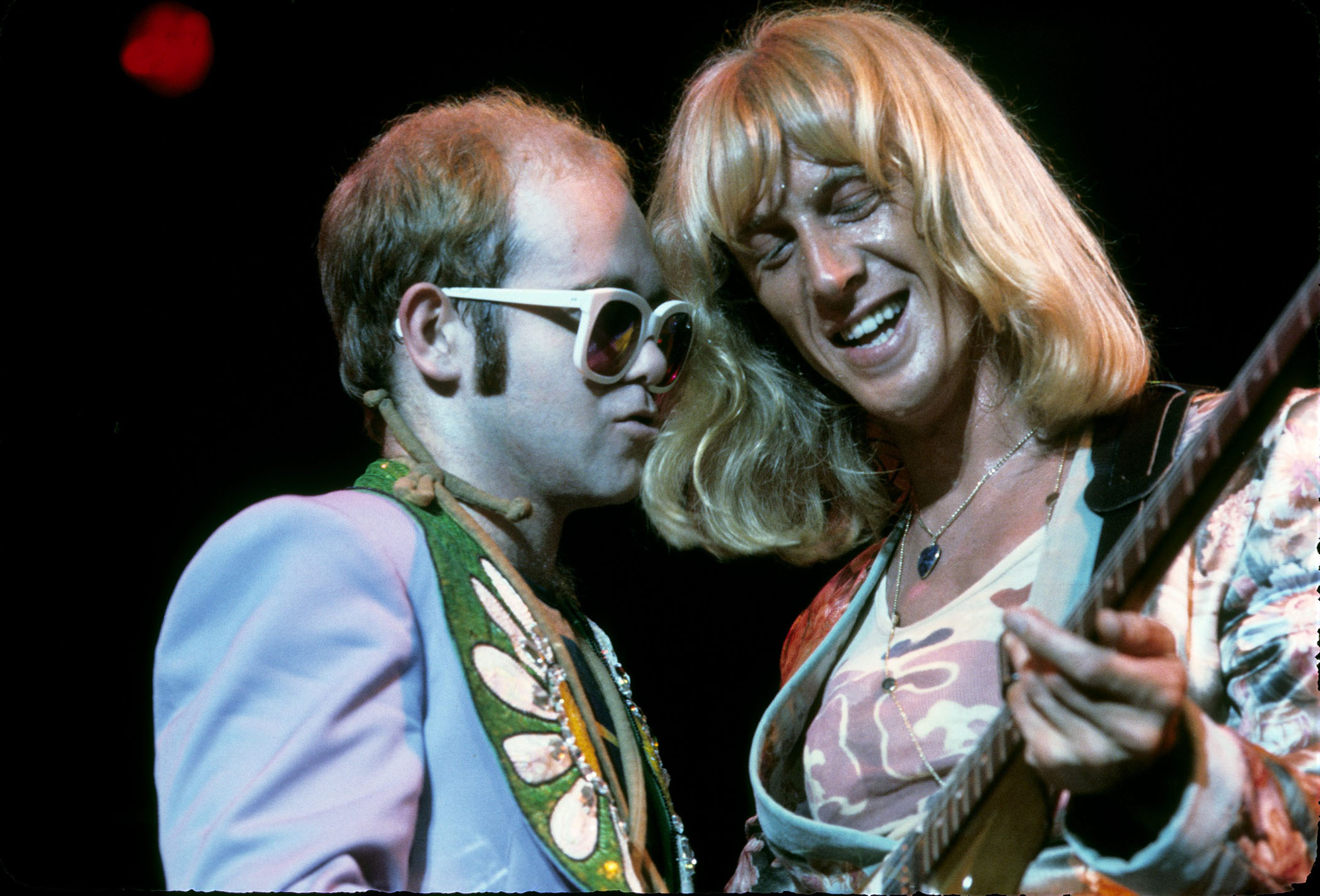
The album was being recorded in the order that Taupin wrote the songs. But there was ample time on the schedule for side missions, and the sessions for Captain Fantastic… would ultimately yield two songs that made it to number one without making it on the album.
Chaperoning Julian Lennon, Elton’s cameo on Walls And Bridges, Lennon in the studio; maybe it was kismet that one of these number one singles would be a Beatles cover.
“John wanted to come out and hang out with us. We didn’t plan on recording anything,” says Johnstone. “But during the odd session when Elton and I, Dee and Nigel were together, one of the things that I would do is I would start playing the riff from Lucy In The Sky With Diamonds. It was just one of those things, and it was like, ‘Oh, we must record that one day!’ Well, when John came up, it was a no-brainer.”
Johnstone got the ball rolling, playing the riff as he often did. He gave one of his Les Pauls to Lennon, and told him he had to play on it. Lennon demurred, insisting Johnstone was the guitar player. Johnstone remembers Lennon saying over and over, “‘Can you tune it for me? I’m not the guitar player, you are”. This was really happening.
Olsson described it as a “pinch me” moment. Everyone was on-point. This was a chance to record a Beatles song with a Beatle.
“I started playing that in the studio, it was like, ‘Let’s do that!’ And we cut Lucy In The Sky and a couple of other things – one song of John’s that we used as a B-side [One Day (At A Time)]. It was just a wonderful time,” says Johnstone.
It’s also another example of how the Elton John Band would maximise their time in the studio. The 9 August, 1974, was a typically productive day by anyone’s standards, with the band recording Bitter Fingers, the second track on Captain Fantastic…, and Lucy In The Sky With Diamonds – the latter augmented with a reggae section that was improvised in the studio by Lennon, who would be credited under his alias, Dr Winston O’Boogie.
This was no throw-and-go recording, an afterthought once Bitter Fingers was ticked off the list. The Elton John version of Lucy In The Sky With Diamonds is Gus Dudgeon production masterclass, a panorama of instrumentation, with percussionist Ray Cooper laying down bells, gong, congas, bell tree and tambourine.
Elton, who would track his lead vocals a few days later, played piano, mellotron and harpsichord. Johnstone and Lennon dovetailed on guitar.
“Then also, we recorded Philadelphia Freedom during those sessions as well, so there was a massive output,” says Johnstone. “If you think about it, this is what we were doing all through those early parts of the ‘70s, till this album, which was ’74. We were always one album ahead.”
Philadelphia Freedom was another huge success from such a small footprint in the band’s calendar. It was written onsite at Caribou on the 13th August, recorded on the 17th, all in a day, with Johnstone just plugging a Fender Telecaster into the board and going for it. Elton tracking his vocals a few days later.
Elton John and John Lennon were not finished. The success of Lucy In The Sky With Diamonds reprised the Beatles at their most psychedelic, a welcome flashback for those still jonesing for a Fab Four reunion.
After the Walls And Bridges sessions, there was talk of a wager, that if Whatever Gets You Thru The Night went to number one, Lennon was to perform it live with Elton and his band. Much to Lennon’s surprise, it did.
“I said sure, not thinking in a million years it was gonna get to number One, Al Coury or no Al Coury, the promotion man at Capitol,” he told Rolling Stone. “And there I was. Onstage.”
It was historic. It wasn’t officially Lennon’s last ever live performance but Elton John’s Thanksgiving show at Madison Square Garden on 28 November 1974 would be the last time he would step up and play in such a setting, in concert before a sold-out crowd.
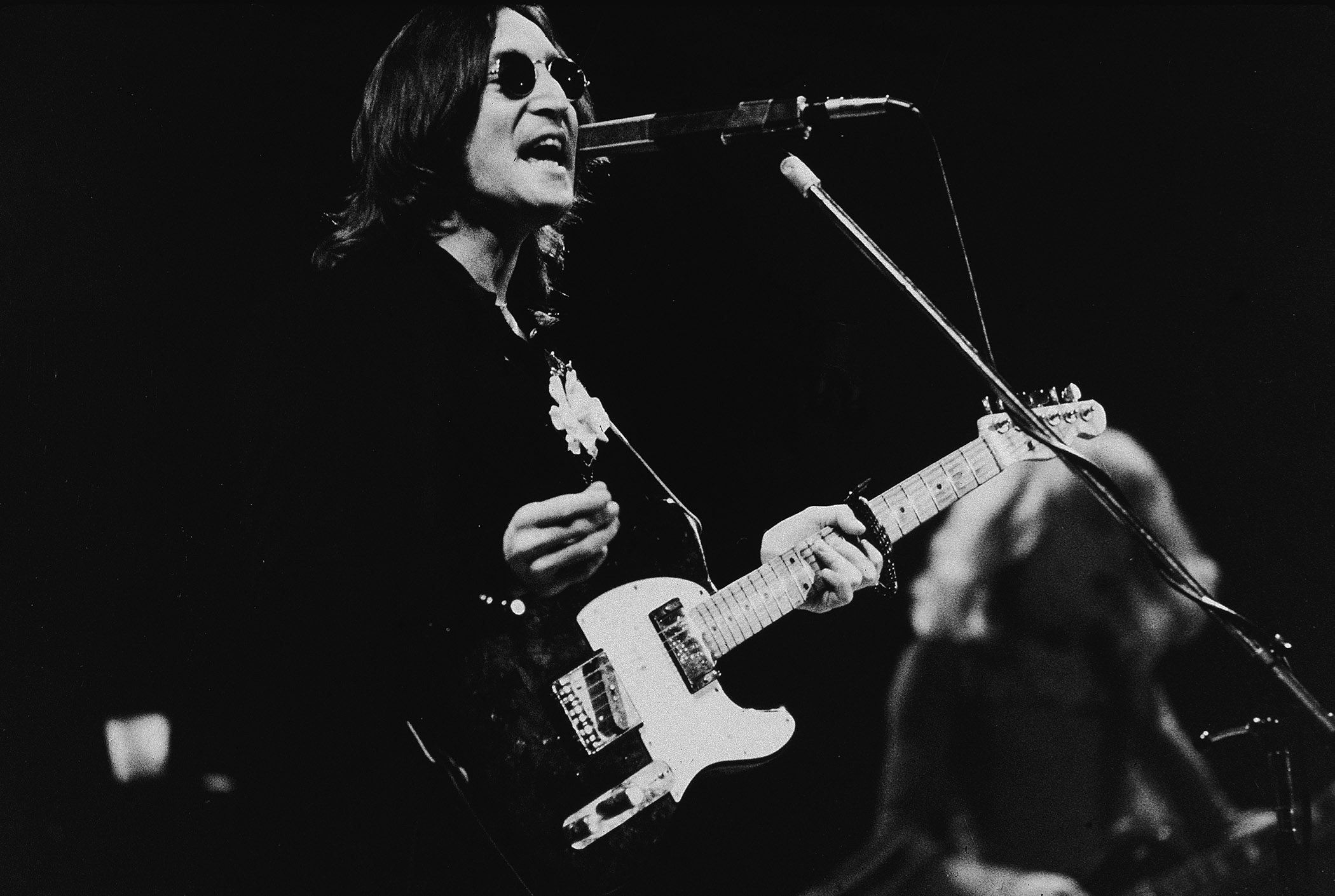
He sat in with the Elton John Band for one Whatever Gets You Thru The Night and Lucy In The Sky With Diamonds, and, for good measure, threw in another Beatles cover, I Saw Her Standing There. The set was recorded. Lennon’s contribution was not included in the original release of Elton John’s 1976 live album, Here And There, but it made the mid ‘90s reissues.
For Lennon, it was perhaps the end of an era. For Elton John, 1974 this was just the start of a new chapter, Captain Fantastic And The Brown Dirt Cowboy was in the can, Caribou was in stores worldwide, and a greatest hits record was coming soon, just in time for Christmas.
It was all systems go. All aboard the Starship for a 16,000-mile 10-week tour playing 45 shows in 31 cities across North America. They were the biggest thing since the Beatles, and the audience was waiting…
- Captain Fantastic And The Brown Dirt Cowboy 50th Anniversary is out now via UMR.
Jonathan Horsley has been writing about guitars and guitar culture since 2005, playing them since 1990, and regularly contributes to MusicRadar, Total Guitar and Guitar World. He uses Jazz III nylon picks, 10s during the week, 9s at the weekend, and shamefully still struggles with rhythm figure one of Van Halen’s Panama.
You must confirm your public display name before commenting
Please logout and then login again, you will then be prompted to enter your display name.







